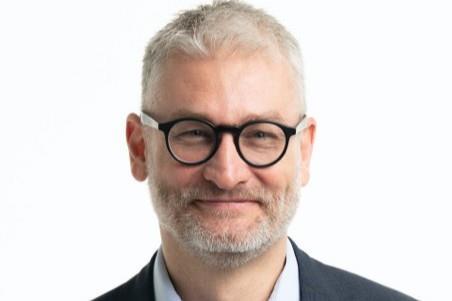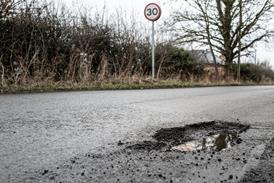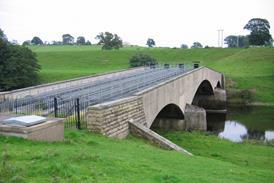Pensions Expert spoke to Brightwell chief executive Morten Nilsson about the government’s surplus release plans, and how he envisages sharing the BT Pension Scheme’s experiences with the wider market.

Morten Nilsson has a wealth of experience in the pension systems in the UK and his native Denmark. Before relocating to London in 2010 to help set up the Now Pensions master trust, he held several senior roles ATP, Denmark’s biggest pension provider.
These roles included overseeing services such as administration that ATP provided to other pension schemes – and now, Nilsson wants to do something similar at Brightwell, which runs the investment and operations of the £36.6bn BT Pension Scheme. Pensions Expert took the opportunity to ask him about recent government policies affecting defined benefit pension schemes, and what this means for his plans for Brightwell.
Pensions Expert: How do you envisage a successful surplus release system working? Would an underpin from the Pension Protection Fund (PPF) play a role in this?
Morten Nilsson: First of all, you don’t want to fall in and out of surplus. You have to have a strong funding position, not only in terms of surplus but also in terms of funding volatility.
In our case, the BT Pension Scheme is moving towards having longevity risk become a bigger part of the overall risk narrative. Naturally, we hedge a large proportion of that off. You also have interest rates and inflation risk to manage. You would also want to make sure that the investment volatility is well managed to deliver stability and predictability.
Logically, I think that starts to look similar to what insurance companies do, how they reserve capital and how they have cashflow matching portfolios. Compared to insurance companies, pension schemes have a less restricted investment universe, and we don’t have the same solvency requirements. On the other hand, we have sponsors who are there to support the scheme.
You have to use the sponsor as an active asset that you acknowledge. You can’t assess a sponsor for the next 60 years, but you can probably have a pretty good idea how it will perform over the next five years.
If scheme trustees take a decision to release surplus, I think they should release it gradually and naturally. Look at how the sponsoring company is performing and whether, if you needed that money back, it would be able to pay it in the near term. You have to use the sponsor as an active asset that you acknowledge. You can’t assess a sponsor for the next 60 years, but you can probably have a pretty good idea how it will perform over the next five years.
That could be in the interests of the sponsor and the trustees. There could be a bit of tension in that relationship, as the trustees must safeguard the pension scheme, but I should also think responsible sponsors will want the scheme to be safe. They don’t want to have a surplus payment one year and then have to make a deficit recovery payment the next year.
Personally, I am not keen on the idea of a PPF underpin because I think it is better to have a more flexible regime. There are so many complexities in having an underpin, because it could drive the wrong behaviours, it could become quite expensive, and the moral hazard issue is a concern.
How much does the BT Pension Scheme already allocate to the UK and to private markets?

Nilsson: We are heavily invested in the UK. In the BT Pension Scheme’s annual accounts last year, we said that two-thirds of the scheme’s assets were invested in the UK, so it’s very significant.
Most of our investments are bonds or bond-like. We have a lot of gilts, corporate bonds and property. We have some infrastructure and some private equity. We have been building out private credit and direct lending.
We have engaged with this government, and all of the previous governments I can remember, to explain that there is a lot of DB money that would be very interested in supporting newer infrastructure, greening the economy, and those types of projects if schemes can find the right opportunities.
I believe the government can help trustees find those opportunities. We wouldn’t be at the highest risk end, but a lot of these investments will require debt. This will give us opportunities to support the financing that these ventures would need.
The best investors, in my view, in critical national infrastructure are domestic pension funds. It’s obvious: we’re here to stay, our members may rely on that infrastructure, and it could give us really good ongoing income. We don’t need excessive returns, but we need more secure returns than some other investors.
What’s your view of how the government is approaching UK investment? Would making it mandatory be a move worth taking?
Nilsson: I struggle a lot with the mandatory approach. There’s a fiduciary duty for trustees to choose the best investments to align with their strategy, and not to be too focused on geography or other elements.
But I really do agree with the government’s observation that pension schemes should play a bigger role in supporting the UK economy. It’s in all our interests that the UK economy does well, and it seems a bit odd that we choose to make these investments in other countries but not in the UK.
I also agree that perhaps the whole industry has become so risk-averse that the members or, in the case of DB, sponsors are losing out and the country is losing out.
I agree with a lot of the agenda. I’m just not convinced that mandation is the right solution.
I agree with a lot of the agenda. I’m just not convinced that mandation is the right solution to that. I would encourage the government to help support an investment environment in which we help ourselves by investing in the UK because it’s so attractive. Government can work in partnership with us to create that environment.
Can you explain a bit more about the importance of scale when it comes to accessing better deals, particularly in UK assets?
Nilsson: Large pension schemes can do things differently from smaller pension schemes. They can have in-house teams that can help bring down costs. They can also access discretionary mandates with managers and negotiate better fees and co-invest. They can go in on bigger tickets than others, and all of that drives quite a lot of value.
Scale just matters here. If you are not big enough, you can’t get access to these deals, and you definitely can’t do anything in-house.
Two examples in the BT Pension Scheme portfolio are our investments in King’s Cross in London or Paradise Circus in Birmingham.
We are now a minority stake investor in both, but we used to be a majority stake investor. We’ve taken an area and transformed it into sustainable redevelopments that are thriving and creating new jobs, but they’ve also been fantastic investments. That would have been really difficult to do if we hadn’t had the scale we have.

Brightwell has made no secret of the fact that it is actively looking for clients. After bringing on the Mineworkers’ Pension Scheme’s administration, what are your targets in this regard?
Nilsson: Our intention is to have a relatively small number of partners that we work very closely with. We still consider ourselves a relatively new entrant in the market. We’re two-and-a-bit years old, and I’m really pleased with the success we’ve had so far.
With the Mineworkers’ Pension Scheme, our colleagues who were going to administer that scheme went to the Mineworkers’ Museum, and it turned out that a lot of them were children or grandchildren of mineworkers. There was an affiliation that was quite deep, and which was wonderful to see.
Member administration is in dire need of better service provision. The fiduciary side is hugely competitive and a bit more sophisticated, but there is also a real interest in something different – a more partnership-led approach.
There are also things ‘in between’, where we can share experiences with our peers. We have talked a little bit on longevity swaps, because we’ve done internal work on that, and developed an efficient process. It’s not traditional consulting, but more like helping colleagues in the industry by saying, ‘We’ve done this, and we could help you if you’re going through a similar thought process’.






















